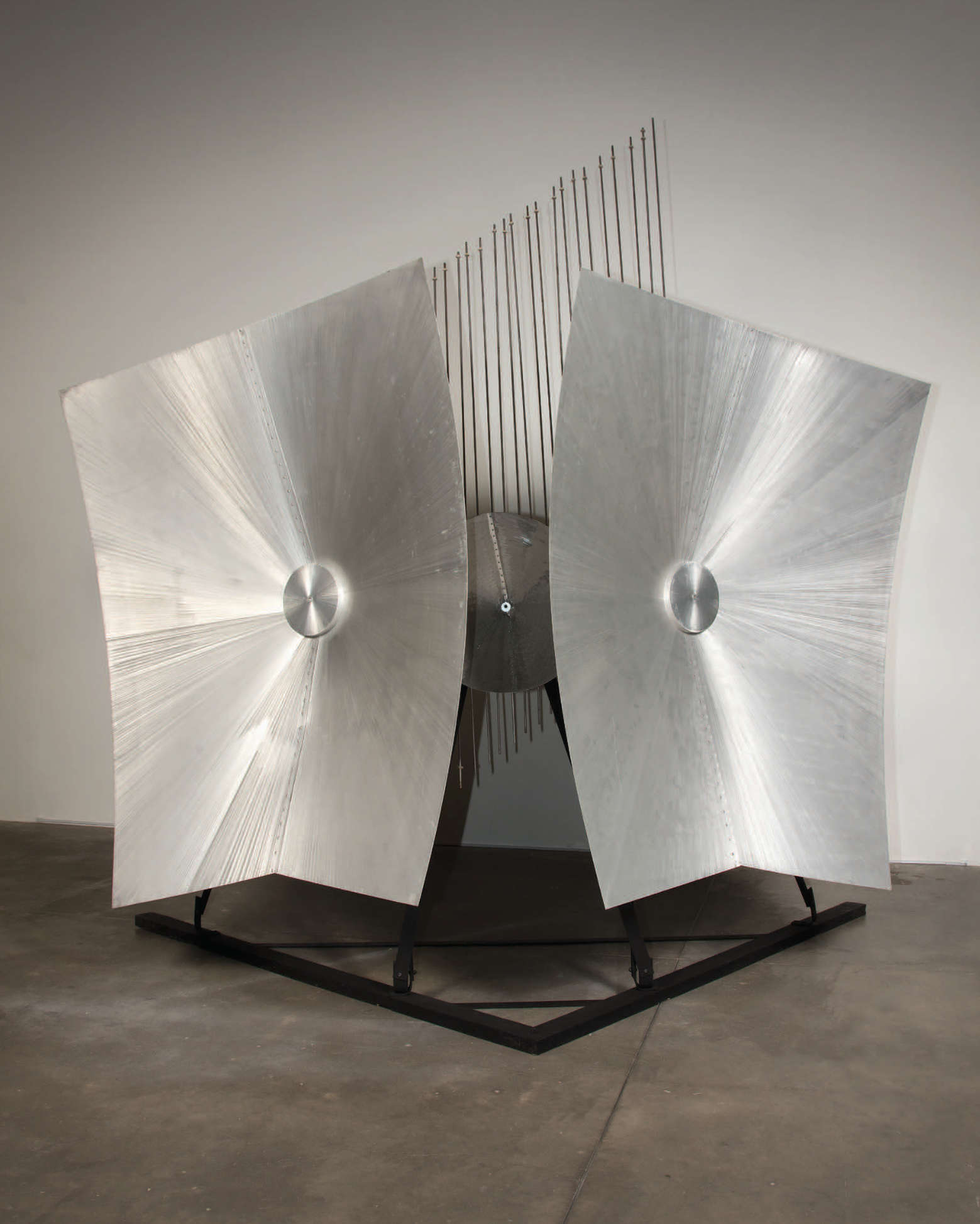Monumento de percusión
François & Bernard Baschet
Escultura musical
[Percussion Monument. Musical Sculpture]
Monumento de percusión combines three innovative aspects of the 1960s art scene: questioning the object, experimenting with sound, and audience participation. The goal of French sculptor François Baschet and his brother Bernard, a sound engineer, was to expand the territory of music into new sound formats that would more faithfully reproduce nature, the industrial era, and the ambient noise of major cities.

Following John Cage’s precepts on the need to test our ears’ immediate experience, the Baschet brothers turned to materials rarely found in musical sculptures (glass grilles, metal bars as vibration elements, aluminum-sheet amplifiers, and plastic balloons) so as to foster a complex experience of the sound spectrum. Here, metals could be rubbed with wet fingers, cotton swabs, and rubber-coated drumsticks, not simply struck. The common denominator of these experiences was the viewer’s own participation in discovering new kinds of sound.
Monumento de percusión was part of the exhibition Estructuras musicales [Musical Structures] at the UNAM’s Museo de Ciencias y Arte in March 1966, following a stint at moma in New York. Monumento de percusión joined the museum collection after this exhibition.
FRANÇOIS BASCHET (1920 –2014)
BERNARD BASCHET (1917 –2015)
Monumento de percusión. Escultura musical, 1964
Percussion Monument. Musical Sculpture
Aluminum sheets and metal rods
Gift of the artists, 1968


